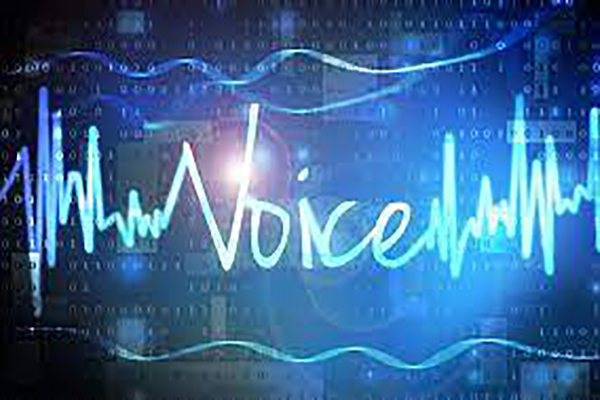The advent and development of voice biometrics have been nothing short of revolutionary in the realm of contemporary technology, where security and convenience are paramount. Voice biometrics, a cutting-edge technology that uses a person’s voice’s distinctive features to confirm their identification, has found extensive use in a number of industries. This blog digs into the fascinating field of speech biometrics, tracing its origins, analysing the state of the market, and analysing its potential.
Imagine a future where the key to your digital life is your voice. This is made possible through voice biometrics, which provide a quick and convenient method of identity verification. Your voice is distinctive and virtually impossible to duplicate, making it a potent tool for identity verification in contrast to conventional techniques like passwords or PINs, which can be forgotten or stolen. Due to its distinctive capabilities and contributions to numerous industries, voice biometrics has grown significantly in significance in contemporary technology.
Enhanced Security:
Voice biometrics provides a very safe way to authenticate. A person’s voice is naturally distinctive, unlike more conventional security measures like passwords or PINs, which can be lost, stolen, or easily guessed. An individual’s voiceprint is incredibly challenging to duplicate because of the complex interaction of physiological and behavioural elements that build it up. Voice biometrics acts as a strong security mechanism in industries like banking, healthcare, and government where protecting sensitive information is of the utmost importance. By ensuring that only authorised users have access to protected systems or data, it helps prevent unauthorised access and fraudulent activity.
Convenience and User Experience:
Technology adoption is significantly influenced by convenience. A seamless and user-friendly authentication process is provided by voice biometrics. Users no longer need to carry about tangible tokens like smart cards or remember complicated passwords; instead, they can just say a passphrase or engage in normal dialogue. The reduction of friction in authentication procedures improves the user experience overall, decreasing annoyance and increasing client happiness. This is crucial in fields like e-commerce and customer service, where accessibility and speedy communications are valued.
Fraud Prevention and Detection:
In order to prevent and identify fraud, voice biometrics is essential. It can spot suspicious activity and possible fraudsters by continuously observing voice patterns during encounters. The system can send notifications or demand additional authentication procedures when a user’s voiceprint doesn’t match the one that has been registered, preventing fraud attempts in real time.
Personalization and Customer Service:
Voice biometrics allows personalised experiences in industries like customer service and healthcare. Service providers can customise interactions based on a user’s past interactions and preferences when that user’s identification is swiftly and accurately validated. By cutting down on the time needed for identity verification, this personalisation not only increases customer pleasure but also increases the effectiveness of customer service.
Healthcare and Telemedicine:
Voice biometrics in the healthcare industry guarantee secure access to patient medical information and records. It supports maintaining patient confidentiality and protecting sensitive data. Voice biometrics gives an additional degree of protection to remote healthcare exchanges, making it more practical to conduct virtual consultations and communicate medical information securely. Telemedicine has experienced substantial growth.
Smart Devices and IoT Integration:
Secure user authentication is now necessary due to the growth of voice-activated smart devices and the Internet of Things (IoT). Users may safely communicate with their devices and manage connected surroundings thanks to voice biometrics. For instance, users can make voice-activated payments or activating smart home door locks with confidence knowing that their voice is the key.
Government and Law Enforcement:
Voice biometrics are used by law enforcement to identify people in recorded or intercepted communications and for criminal investigations. Voice biometrics can be used to confirm travellers’ identities at border crossings and immigration checkpoints, increasing national security.
Compliance and Regulations:
Strict laws governing data security and privacy apply to many businesses. By providing a safe authentication technique, voice biometrics assists organisations in adhering to these standards. Additionally, the technology can offer audit trails and voice interaction logs, both of which are useful for compliance reporting. Modern technology now relies heavily on voice biometrics to meet both the urgent requirement for ease and security. Its applications are used in a wide range of industries and help to improve security, fraud prevention, and user experiences. Voice biometrics is likely to become more important as technology develops, helping to shape the digital environment.
Historical Perspective
Let’s take a quick look at voice biometrics’ past in order to understand its importance now. The field of voice biometrics dates back to the middle of the 20th century, when researchers started looking into the acoustic characteristics of speech. However, speech biometrics didn’t begin to take shape until the late 20th century, with the development of strong computers and sophisticated algorithms. Its employment in many applications was made possible by developmental milestones like the invention of voiceprints and the improvement of recognition algorithms.
Market Overview
The market for speech biometrics is expanding at an exponential rate. The market for voice biometrics is anticipated to grow rapidly as companies and organisations look for more reliable security solutions. Leading companies in the sector, like NICE, Verint Systems, and Nuance Communications, are driving innovation and influencing the market’s development. The market is divided into many industrial verticals, such as the government, telecommunications, healthcare, and financial sectors.
Technology Underlying Voice Biometrics
The examination of a person’s voiceprint, which is distinctive and particular to each person, is the foundation of voice biometrics. To identify and authenticate users based on their voice traits, voiceprint recognition and verification uses machine learning techniques and artificial intelligence. In terms of security and usability, this technology has exceeded conventional authentication techniques like passwords and PINs.
Challenges and Concerns
Voice biometrics has its problems and issues, just like any other technology. Since speech data must be maintained securely to prevent misuse, privacy and data security are significant challenges. Cybercriminals may use voice biometrics system flaws to their advantage. Additionally, ethical issues come up, particularly when users’ voice data is taken without their consent.
Market Trends and Opportunities
Voice biometrics appears to have a promising future. In addition to becoming more integrated with other technologies like artificial intelligence (AI) and the Internet of Things (IoT), it is gaining appeal in developing markets. Along with changing rules and compliance requirements, the expansion of voice-enabled services and devices is opening up new possibilities for development and innovation.
Future Outlook
Voice biometrics is expected to grow significantly in the future. We may anticipate seeing considerably more advanced applications of this technology over the next 5–10 years. Voice biometrics will become a crucial tool in numerous industries as a result of advancing technologies and developments, which will also increase their reliability and security. A stunning convergence of security and technology may be seen in voice biometrics. History, the state of the market now, and the outlook all point to a technology that is here to stay. Voice biometrics will become more and more important in safeguarding our digital lives and improving user experiences across businesses as it continues to develop.















